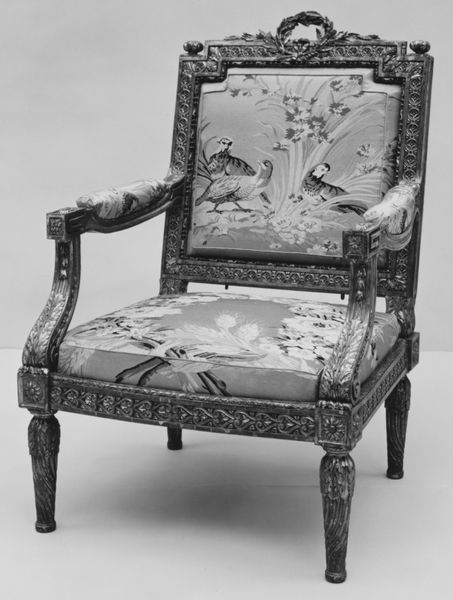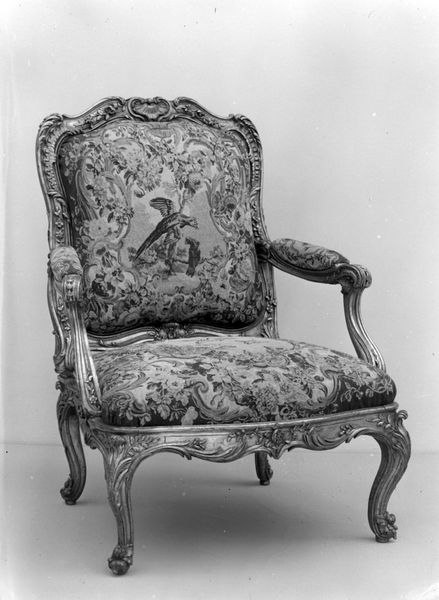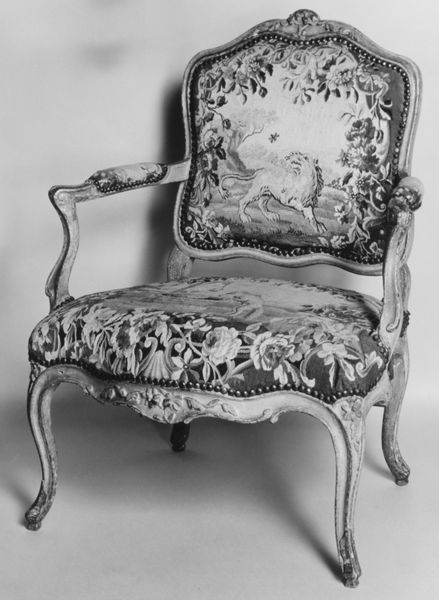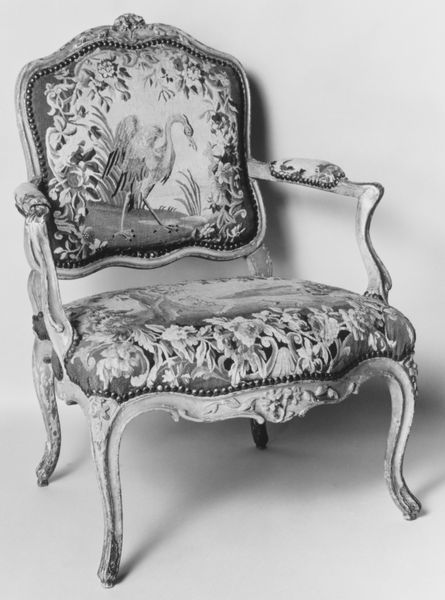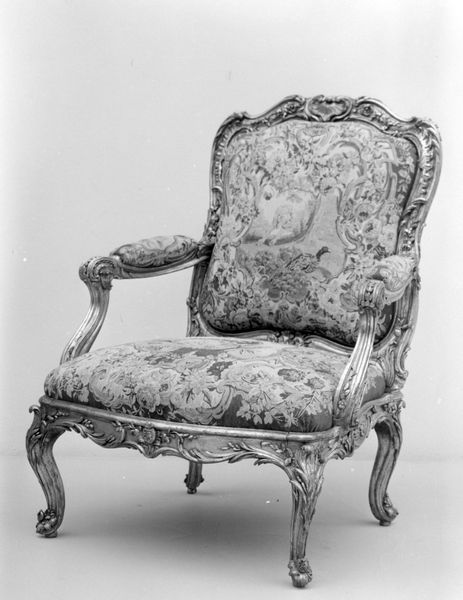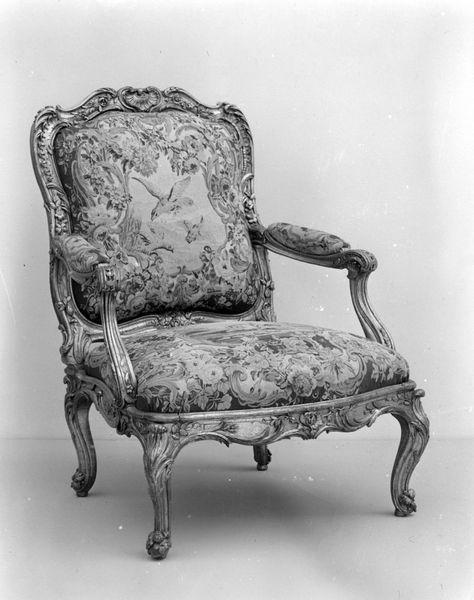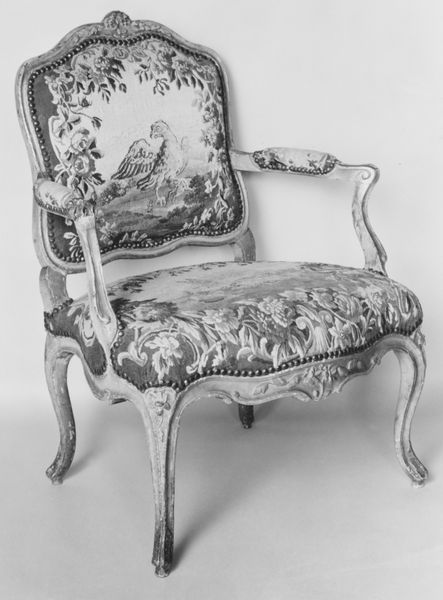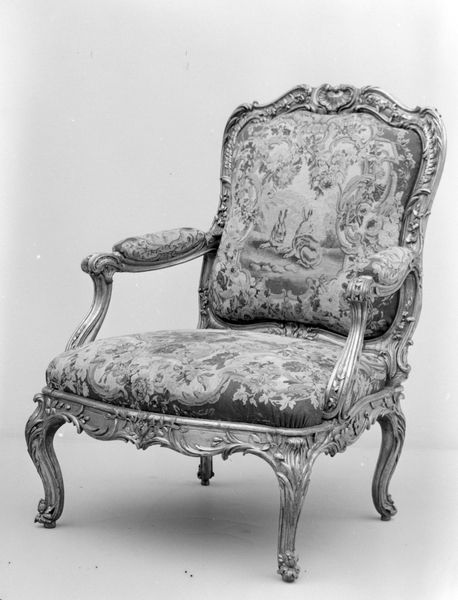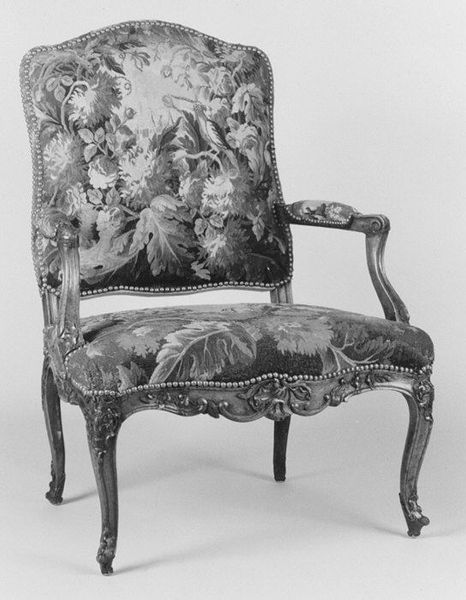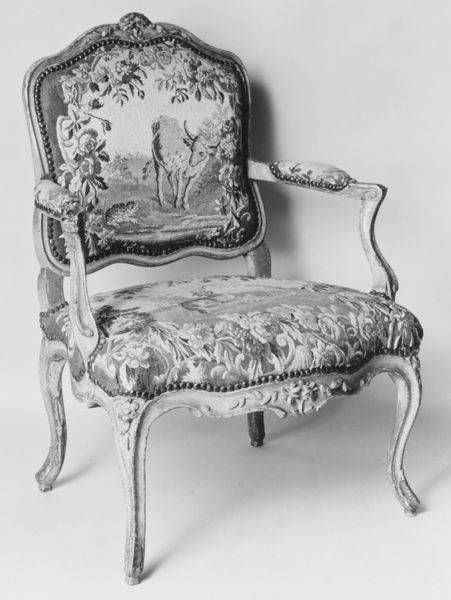
Dimensions: Overall: 38 × 28 1/2 × 28 1/2 in. (96.5 × 72.4 × 72.4 cm)
Copyright: Public Domain
Curator: Wow, that armchair just oozes "I'm too good for you," doesn't it? All those frills… I almost want to curtsy to it! Editor: Indeed! This “Armchair (part of a set)” offers an interesting study in Baroque and Rococo styles, wouldn’t you agree? Dating from 1700 to 1915 and crafted from wood and textile, it lives here at the Metropolitan Museum of Art. Curator: It’s a riot of details! All that floral embroidery... I wonder, was it comfy? Or just… for show? You know, like some people! Editor: Comfort aside, the chair demonstrates key principles of formalism: the interplay between structure and ornament, for instance. Notice how the rigid, geometric frame contrasts the organic forms in the upholstery’s pattern? Semiotics suggest this contrast signals a world where reason and nature were both highly valued. Curator: So, like, "I’m sophisticated, but I also smell the roses"? Makes sense! And those legs—are those supposed to be stylized leaves? Editor: Precisely. Note how they add to a sense of visual ascension, culminating in the figurative embroidery. Consider also the color scheme. Although a monochromatic image, it relies heavily on contrast and layering, essential techniques across Baroque and Rococo aesthetics. Curator: Imagine the parties that chair has witnessed! Whispered secrets, stolen glances… If furniture could talk, eh? Editor: One could certainly theorize on its socio-historical impact, or analyze how the chair contributes to broader discussions of class, taste, and artistry... Curator: … Or just plop down with a book and a cup of tea. Who’s to say the most rebellious thing isn't sometimes finding quiet beauty in something so unabashedly EXTRA? Editor: An intriguing interpretation indeed! The dialogue between its materiality and its historical context grants us fresh perspective, even centuries later.
Comments
No comments
Be the first to comment and join the conversation on the ultimate creative platform.

